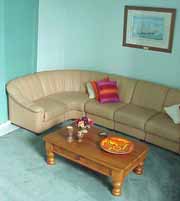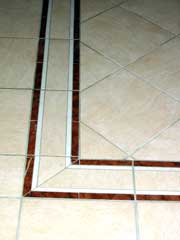Reducing Living Room Allergies
Learn about reducing living room allergies in your home.
What is an allergy?
It is a condition which the body is induced by an allergen (a harmless substance that induces an allergic type immune response in some people), to form an immune response increasing the production of immunoglobulin E. This is an antibody which leads to diseases like asthma and symptoms such as hayfever.
There are many different types of allergies – airborne – grasses, pollens, pets, dustmites, which cause allergic reactions from inhaling these airborne substances. These effect the nose, eyes, throat, ears and airways of the lung.
Ingested allergies
– caused from eating substances that once absorbed into the blood can cause gastrointestinal problems and can effect the skin, nervous systems, joints as well as the symptoms of airborne allergies – the nose and lungs.
Injected allergies
– bee or wasp stings produce inflammation.
Skin contact allergies
– such as dermatitis, numerous products can cause this inflammation of the skin, soaps, perfumes and cleaning products.
Why do we need to know about allergies?
We need to know about allergies because they can effect us all, and in many different ways. Obviously we can’t totally prevent them but by understanding what causes them we can minimise their effect on our home environment.
Reducing Living Room Allergies
Living Room Floor
Select a hard flooring, for example timber floor, tiles, linoleum in place of soft floors ie carpet.
A tiled floor is easy to keep clean
Dust mites love to live in your carpet and the proteins from their fecal droppings become airborne when disturbed allowing the inhalation and possible allergic reaction.
Rugs that can be removed and cleaned regularly are an option if soft flooring is required for comfort in some areas.
If changing your existing flooring is not an option, vacuum regularly making sure that you move the furniture as you go and vacuum the entire area – not just what you can see.
Living Room Ventilation
This is often underestimated in homes. You can’t beat natural airflow from open windows and doors. Seasonal problems with pollens and grasses could effect some individuals here – so pick you time to do this.
Living Room Walls
Keep wall as flush as possible as decorative trim muldings, and textured wallpapers are dust catchers. A smooth washable paint finish is ideal. If you already have a collection of dado rails, picture rails, large moulded skirtings etc – get out a damp cloth and keep them dust free.
Living Room Furniture
Another home for dust mites. When purchasing or recovering your sofas or chairs select a fabric in which dust mites cannot colonise eg leather or vinyl.
If you have existing furniture that is not finished in these products – vacuum frequently to remove some of the mite allergen – it won’t remove the live mites but you’ll feel like you’ve given it your best shot.
Try using throws of chairs and couches as these can be readily washed to remove mites and allergens.
Cane or Rattan furniture avoid, as it is a nightmare to clean and keep free of dust.

A leather lounge suite doesn’t allow dust mites to colonise
Living Room Soft Furnishings and Window Treatments
Cushions – select fabric and inners that can be washed and tumble dried, this is useful not only for getting rid of mites and allergen but for the wayward glass of red wine or children’s ice-cream.
Curtains and Drapes. Once again select fabrics that can be washed, slimline venetian blinds collect dust and are difficult to clean at home. I have been seen scrubbing blinds with a nail brush in the bath – the blinds are in the bath not me.
Double-Glazing is an ideal solution for insulation and preventing condensation which often causes mould growth.
Living Room Decoration and Electrical Equipment
Bookshelves and bric a brac are marvelous dust catchers – where ever possible – store precious knick knacks behind glass doors in display cabinets. This will cut down the dusting required and reduce the risk of breakage from frequent cleaning and handling. TV’s and Stereos are best kept in cabinets. They are difficult to clean and their static nature attracts the dust. Any built in furniture shelving is best to go full height, cutting out another out of reach surface to clean.

This carved chest has intricate detail, a fantastic dust collector.
Pets
We love them – but do they agree with us? Banning them from the house is the best way to reduce allergens – but who could do that.
You can create a pet free area in your living room – but it will take time. Designate a space for your dog for example in the hallway – this is his space and he is usually happy to go there on command.
Cats are al little more difficult as they tend to have a mind of their own. Closing doors and teaching them from a kitten not to enter is probably the best option. If all else fails try a similar option as for the dog – place a washable rug on the sofa that the cat is allowed to sit on and only that rug.Wash frequently.
Unfortunately the cat doesn’t even have to be in the room for their allergens to be present.
They are extremely airborne and come from their grooming, licking their fur, the saliva dries and is shed into the air. As well as this the allergens are very sticky in nature and adhere to clothes and fabrics, they can therefore be spread to other peoples homes, cars, taxis, buses etc.
So you can only do your best in your environment and hope that no one in your home is predisposed to the cat allergen.

Designate a space for your dog to rest, away from the living room
So in conclusion, we cannot make our living room totally allergen free but with a little knowledge we can make it a lot more comfortable for those with a predisposition for allergens. As we have learnt, cleaning plays a large part in reducing the allergens present, so follow this general guide to cleaning, ensuring that you make the most of your living room.
Vacuum flooring daily – if hard flooring clean with a damp mop. Use a damp cloth to dust surfaces, this picks up the dust and removes it rather than using a feather duster which just transfers it back into the air to settle somewhere else.
Once a week dust the hard to reach spots, picture frames, picture rails, knick knacks and bric a brac.
Wipe down furniture and polish (be careful of scented products). Every three – six months wash curtains/ blinds carpets and vacuum thoroughly to remove any remaining dead mites.
You are now on your way to a Happy Living Room.
Written by Lee Brown

